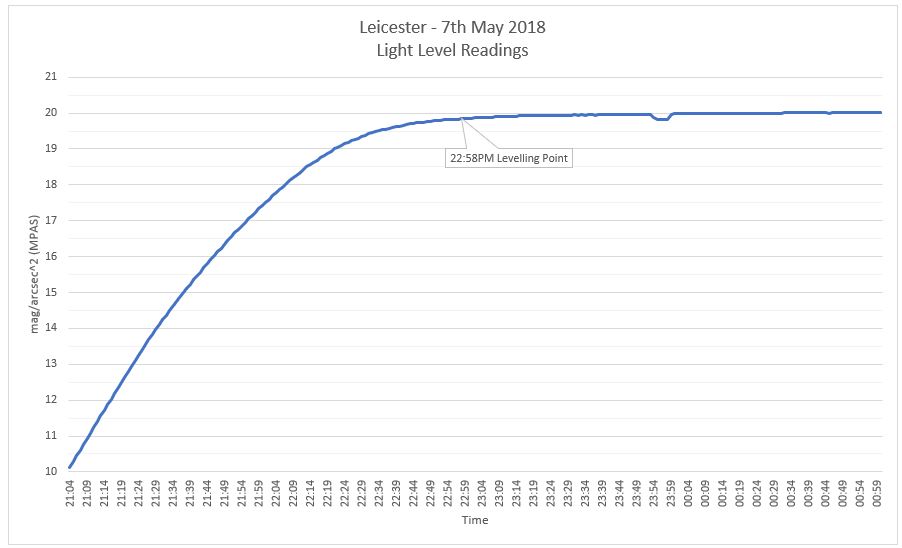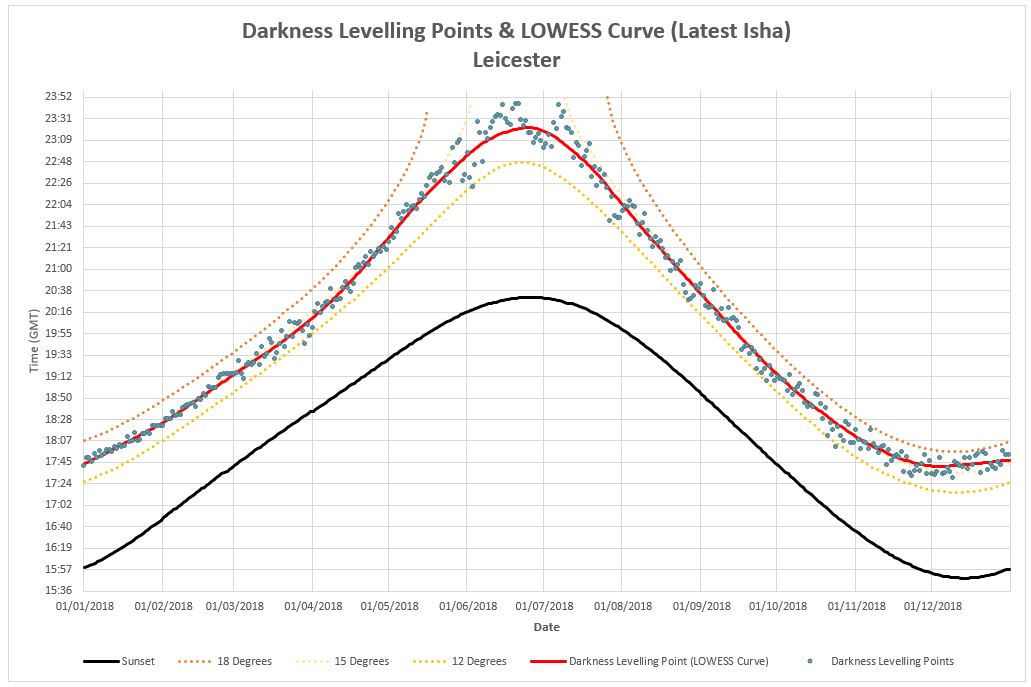The continuous data logging of light level readings (magnitudes per square arcsecond - MPAS) from sunset to sunrise the following morning, allowed the study to establish the point at which the influence of the sun below the horizon after sunset was no longer resulting in twilight; the levelling point. This would represent the latest point at which Isha could be set as the SQM is more sensitive than the human eye.
In Islamic terms, there are a number of considerations when defining Isha with the two key definitions being:
- Shafaq al-Ammar - When the red light after sunset has been replaced with only white light
- Shafaq al-Abyad - When the white light has been replaced with darkness
The levelling points collected throughout the year by the study could represent Shafaq al-Abyad, but it is likely it is occurring before this point because after a given MPAS reading, the human eye could not detect the changes in darkness.
The following chart is an illustration of this principle. The MPAS continues to rise until it levels off at 22:58PM BST at around 20 MPAS during the evening of the 7th May 2018. Shafaq al-Ammar would have occurring earlier but this study did not attempt to establish the MPAS which represented the shift from red to white light. If Shafaq al-Abyad has not occurred before, then 22:58PM BST is the point at which Isha has definitely occurred as the sky will not get any darker.
The following charts show the light levelling points (Blue Dots) for a 12 month period in the city of Leicester (UK). Along with the established levelling point for each day, the corresponding time at which the sun is at the depression angle of 18°, 15° and 12° is shown. The mathematical LOWESS function has been applied to the varying levelling points to establish a curve through the values and is shown as a red line.
All times have been shown in GMT. During British Summer Times (BST) plus one hour is added to the times shown.
[Click Image to Expand]
What the levelling point analysis shows:
- There is no fixed point at which Isha can occur. This is explored further in the Impact of Climate section
- Shafaq al-Abyad can occur at any time within a period (maximum and minimum point)
- Levelling point data indicates Isha occurs much earlier than 18°
- Levelling point data indicates that Shafaq al-Abyad (Isha) does not occur after 15° (maximum)
- Isha may be occurring much earlier than the levelling point because:
- SQM reading is more sensitive than the human eye
- The human eye may not be able to differentiate changes in darkness beyond a given MPAS (e.g 18 MPAS)
- The time of Shafaq al-Abyad (Isha) has been determined throughout the year


